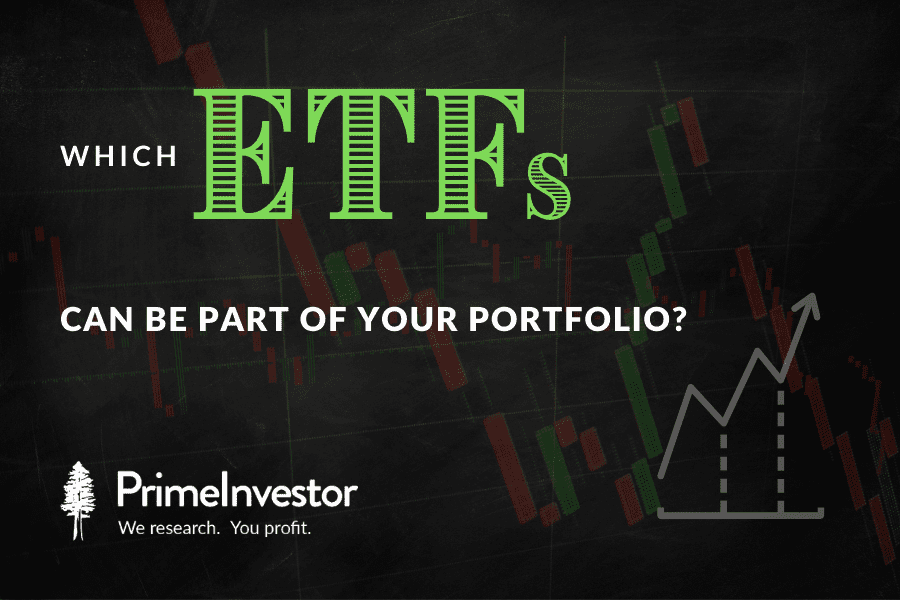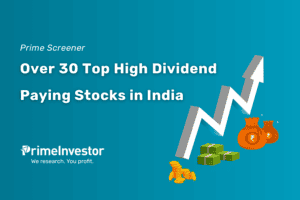The world of passive investment options is a growing one, and the ETFs available now number over 100.
Because passive investing has gained such a name for itself, you may think that anything passive is a great investment. No. There are ETFs which make good investments and those that do not, just like with active funds.

So, here’s breaking down the ETFs available right now into buckets – and upcoming ETFs will also fall into one of these – and which ones are worth considering in your portfolio and which can be ignored. Our broad categories go like this:
Equity ETFs
Equity ETFs, obviously, form the bulk of the available ETFs in the Indian context. Equity ETFs can be split into those that track broad marketcap-weighted indices, thematic/sector, and factor based.
#1 Broad market-cap based indices
These are ETFs that track the main market indices – the Nifty 50, Sensex, Nifty Next 50, Nifty Midcap 150 and so on. These indices are purely based on market cap; i.e., stocks with a larger market cap earn a higher weight. The key factor working in favour of these indices is that you stay in tune with the market. Rallying stocks see their market cap swell, in turn increasing their weights and vice versa. If you intend to stay truly passive, these are the indices you should go for.
Within the equity ETF space, most ETFs come in this bucket. Within these, the Nifty 50 index is the most common. However, the variety of indices available is large enough to tap into different market cap segments.
That means it is possible for you to build a diversified equity portfolio across market caps using ETFs alone. These index ETFs should form the core of your portfolio, if you are going for a passive approach. Any other equity index can at best be an add on.
However, as with all ETFs, volumes and tracking error become important. The good news is that equity ETFs see more liquidity than debt. The bad news is that volumes and error vary widely with ETFs.
By far the most liquid ETFs are those built on NSE indices. BSE-based ETFs typically see low trading. To compare, Nippon India Nifty BeES averaged Rs 81 core in daily traded value over the past 3 months, and Rs 32 crore over 2021. SBI Nifty ETF averaged Rs 6.8 crore in daily value over 2021.
SBI Sensex ETF, on the other hand, saw less than Rs 1 crore average daily value in 2021 – and it is among the highest in terms of volume for Sensex ETFs. Volumes have only just touched Rs 1 crore recently. The Sensex Next 50 has seen just about Rs 5 lakh in daily turnover for several quarters now.
Therefore, when looking at these broad indices, NSE indices are better options at present due to their turnover. If you’re keen on investing in BSE indices, index funds will be the better option.
But this does not mean that all NSE-index based ETFs do well. The Nifty 50 sees strong volumes owing to F&O activity. Other indices, whether it is the Midcap or the Nifty 100 are not heavily traded and can therefore have higher tracking error. It is essential to run a check on both aspects before opting for them. Our Prime ETF rating considers these factors in the rating, so this can be a good starting point.
#2 Thematic indices
These are indices that track a particular theme or sector. This bucket houses the most ETFs apart from the one above. The available sectors now are banks, IT, auto, FMCG, pharma and financial services. Themes include healthcare, infrastructure, consumption, and private banks.
You need to tread carefully with these ETFs for two reasons:
- They are inherently risky. Moreover, sector indices are usually weighted by market capitalisation. Given that some stocks can be far higher by market cap than others in its sector, the index can be heavily dependent on a few stocks doing well. For example, the Nifty IT index has half the weight coming from TCS and Infosys. You need to take a call on whether you would be better off playing the theme through individual stocks if you want a focused approach or through thematic mutual funds if you want more diversification.
- Barring a few, trading activity is low. The Nifty Bank BeES, for instance, sees healthy activity due to the F&O market as it is heavily bet on there. Of the sectors, ETFs built on banks are the most traded. Sectors such as IT are seeing some interest, but others such as FMCG or healthcare are far behind. See the table below to get an idea.
So, with sector/thematic indices, barring a couple of sectors, you do not have much choice in the ETF space owing to poor turnover. This category is therefore better played with thematic or sector funds instead.
#3 Factor-based indices
This is an emerging crop of ETFs. Indexes here are those that use certain factors – such as alpha, volatility, quality, value, dividend yield and so on – on stocks in a given index. Those that score the best on the factors are taken to build the factor index. An index can consider one factor alone (single-factor indices) or a combination (multi-factor indices).
Factor indices can seem attractive as they emphasize a particular performance trait – who wouldn’t want an index which picks stocks with high alpha! However, in these index ETFs, bear the following points in mind before deciding to go for them:
- The factor index needs to showcase good performance against the parent index. Run a check on performance and decide whether you would be better off simply investing in the parent index.
- Many factor indices draw from the same overall pool. This, together with the manner in which the factors are used and index built can sometimes cause overlaps between the indices. For example, the Nifty 50 Value 20 draws from the Nifty 50. It uses metrics such as the ROCE, PE, PB and dividend yield to pick stocks. The Dividend Opportunities 50 draws from the top 300 companies by market cap, but also uses dividend yield as a criteria. As a result, the two indices have a lot in common – the Value 20 index has TCS, Infosys, ITC and Hindustan Unilever and L&T as top weights making up 57% of the weight (in that order). The Dividend Opportunities index has the exact same stocks at the top and with a significant 45% weight. And that’s not including other overlapping stocks! Therefore, check whether the factor index ETF you are looking at does not share significant overlap with other indices in your portfolio.
- The factor index concept in India is fairly new. At the time of an index’s launch, data is usually back-calculated or back-tested. For example, the Alpha Low Vol 30 index was launched only in July 2017 but has back-worked data from 2005. Actual real-time performance comes in only from the time of the index’s launch. Relying on the back-worked data can sometimes be misleading as to the index’s actual performance. The Alpha Low Vol, for example, was a top-notch performer against the Nifty 100 going by the past data, but has been unable to outperform well over the past year. Therefore, for these new indices, you can either watch for a while or take small exposure initially.
And of course, volumes and tracking error are also important here too! Check Prime ETF Ratings to get an idea of volumes in these ETFs.
But we do get that understanding these nuances in factor index ETFs is not up everyone’s alley. We will therefore be gradually covering these indexes over the coming months to give you a better understanding of what they do.
Meanwhile, refer to Prime ETFs for our recommendations on equity ETFs in all the 3 buckets above.
International ETFs
These aren’t very many, but they span the US market through a few different indices and the Hang Seng. At this time, volumes are abnormal in ETFs tracking the US markets owing to the RBI’s curbs on mutual funds investing internationally. The deviation between market price and NAV is therefore widening for the ETFs given that no fresh units are being created (only existing units are being traded).
Refer to our explanation on how to choose international funds to know which market to go for. The FoF route (where the fund invests in international ETFs) is an option if you want to go for the Nasdaq 100 (as these don’t fall under the RBI curb). You will suffer lower tracking error. Refer to Prime Funds for our recommendation. Under normal circumstances, mutual funds work far better for overseas investing than ETFs because of their greater variety.
Commodity ETFs
Up until a few months ago, commodity ETFs were only gold. Now, with SEBI giving the green light to silver ETFs, this metal joins gold in the commodity ETF space. Here again turnover and tracking error takes centre stage.
On this count, the commodity ETF set is a very mixed bag. Take a look at the Turnover column in our ETF Ratings to get an idea of volumes involved. Of the available ETFs, only a handful meet the criteria in terms of the means to invest. The good news is that you don’t really need multiple ETFs to invest in gold or silver – just one will do.
But then, should these ETFs be part of your portfolio? On silver ETFs in your portfolio, our view is that it is a tactical play rather than part of an asset-allocated portfolio. We don’t currently have a call on silver. As far as gold goes, it does work as a hedge against equity in medium to long-term portfolios. You can invest in it if you wish to, but ensure that your allocation is not high. We have discussed using gold as part of your portfolio as well as the nature of gold returns here. For our recommendations on which ETFs to go for, do check Prime ETFs.
Debt ETFs
The ETFs in the debt space are split into target-maturity ETFs and other ETFs that don’t have a fixed maturity date.
#1 Target maturity debt ETFs
This is an emerging class, where each ETF tracks a debt index that has a set maturity date. At this time, the maturities available range from 2023 to 2032. In target maturity ETFs, it will close once the maturity is reached. Using target maturity ETFs in your portfolio is the same as using target maturity funds, which we discussed just last week. To put it very simply, there are two ways to use these ETFs:
- Specifically pick the maturity that matches your investment timeframe. Hold these ETFs until maturity, collect the proceeds and use it to meet your goal.
- Snap up good yields in a specific maturity, even if it varies from your timeframe. In this case, you will either need to exit based on the rate cycle to lock in your gains or, if you’re holding to maturity, reinvest in other instruments once the maturity is up.
However, in more practical terms, it may be easier to invest in target maturity funds (fund of funds or index funds) rather than the ETF. This is because trading in these ETFs vary based on the maturity & yield, and you may not have reasonable volumes across the board. The Bharat Bond series alone scores consistently on trading volumes. Most others tend to be on the lower side. Turnover of a few lakhs or lower is not a good sign.
#2 Other debt ETFs
These are either liquid ETFs or track gilt indices such as the 5-year gilt or the 8-13 year gilt or the 10-year gilt index. In these, liquid ETFs alone merit any attention. The reason is that the other debt ETFs simply see very low and very erratic trading. This makes them entirely avoidable as investments.
With liquid ETFs, too, choices are limited. Only Nippon India Liquid BeES stands out as it is used to temporarily hold cash by stock traders, giving it high turnover. However, liquid ETFs are hardly useful as portfolio debt allocations! Like with liquid funds, these are best fit for very short-term investments.
In debt ETFs, therefore, you can at best consider the target maturity ETFs for portfolio allocations. For our recommendations and how to use them in your portfolio, check Prime ETFs.
ETFs need to be put through the same checks in terms of performance and suitability for your portfolio as you would with active funds. Our ETF recommendations are housed in Prime ETFs. For those looking for ETF-only portfolios that mix ETFs across the buckets above, check our ETF-only readymade Prime Portfolio.








2 thoughts on “Which ETFs can be part of your portfolio?”
I think you should make this article freely available to all. A very clear, concise write up and provides enough information retail individuals to ponder and deliberate.
Madhavan
Thanks…we will be moving this article to our Varsity section later. – regards, Bhavana
Comments are closed.